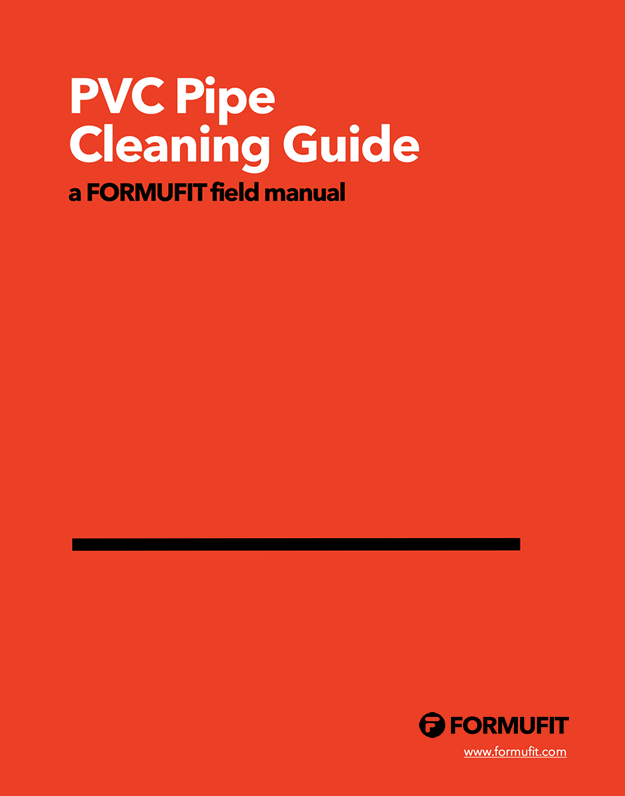How to Clean PVC Pipe
Table of Contents
Welcome
This guide is designed to be friendly and knowledgable and to provide options for different people from all settings and backgrounds. Whether you're a first-time PVC builder, who has never picked up any type of tool, or a seasoned PVC enthusiast or maker who uses PVC in everyday ideas and activities, this guide should provide a general manual for cleaning plumbing-grade PVC pipe.
First, we'll cover all the basics, like general safety instructions. Then we'll determine what methods are available to clean plumbing-grade PVC pipe. Finally, we'll talk about some additional PVC manipulation methods for finishing up the cleaning process.
If your questions are not addressed here, feel free to contact our support team at info@formufit.com. We'll be glad to help.
About the Second Edition
We previously put all of our PVC tips online in a basic HTML Web page format; however, we found that many of our users needed a printable copy that could be taken to the garage, workshop, or a location where the cutting, assembling or pipe painting was being performed, away from a PC. This latest edition solves that problem, giving our end-users a printable 'field manual' that can be taken along with them to wherever they choose to construct their creations.
Additionally, we address some additional questions that have been raised about PVC pipe cleaning since the development of our original online-only tips.
Cleaning PVC Summary
While it's not necessary to clean PVC pipe when using FORMUFIT Furniture pipe, many of our users prefer to use less-expensive, off-the-shelf plumbing grade PVC pipe from their home center or hardware store.
Standard plumbing-grade PVC has all sorts of issues; manufacturer ink stampings, size indicators, grease or release agents from manufacturing, or just dirt from sitting in a warehouse or on a hardware store shelf.
We offer these cleaning tips to allow our users to use this inexpensive, readily available pipe and hopefully complete their project with minimal cost. It's the goal of this field manual to show how to bring plumbing-grade PVC pipe into a (more) attractive appearance without sacrificing cost.
Consideration for safety is also important when bending PVC pipe. When heated, the molecular structure of certain elements of PVC changes, releasing some of its chemicals into the air, and with long-term exposure, could be harmful.
Legal
DISCLAIMER: The information provided within this manual is for informational purposes only. FORMUFIT accepts no responsibility and is excluded from all liability for damage and/or loss that may be suffered by any other party as a result of using or in connection with such use or loss of use of this information, including but not limited to loss of profit, loss of opportunity, loss of business, indirect damages, incidental damages, special or consequential loss, injury or loss of life.
Safety First.
The procedures outlined in this field manual use chemicals, such as Acetone, to remove markings on PVC pipe. As with any manual that involves tools or chemicals, safety needs to be discussed.
Most methods to clean PVC pipe involve using chemicals. Each of these chemicals can cause serious harm to an individual if not used properly. Be sure to read, understand, and follow all the safety rules of chemical products and their packaging. Failure to do so could cause bodily harm. In addition, the following precautions should be followed:

Hands
Always make sure you use some type of hand protection when working with chemicals, such as the ones discussed in this field manual. We recommend the large yellow kitchen gloves, available at most grocery and department stores, as they won't break down like standard nitrile or surgical gloves.

Eyes
Wear safety glasses, goggles, or other eye protection when working with chemicals. The chemical product may spill, splash, or you may accidentally rub your eyes. This is critical when dealing with chemicals.

Mouth & Lungs
Wear a mask or respirator. Some chemicals dealt with when cleaning PVC pipe may cause allergic reactions, respiration issues, or other conditions. Work in an open garage or a workshop with open windows. Vapors from the chemicals may cause you to become dizzy. If this occurs, leave the room immediately and seek fresh air.
PVC Cleaning Methods Explained
There are three recommended methods to cleaning plumbing-grade PVC pipe:

Surface Sanding
The easiest method to clean the manufacturer's ink markings from the surface of PVC pipe is to use foam or rubber sanding blocks to sand away the markings. This method will sand elements of the pipe surface, revealing only the plastic below the ink and markings. It uses sanding blocks available in most hardware stores and home centers. This method may result in a patchy dull, matte finish but does not require the use of chemicals.

Surface Ink Dilution
The most common method to clean the manufacturer's ink markings from the surface of PVC pipe is to use Acetone to break up and dilute the ink. The ink is a complex formula that is applied by way of a pipe printer directly to the pipe. The only method to remove the ink is to melt the ink itself from the pipe and quickly wipe it away. This method often results in a streaky and incomplete surface cleaning if not performed quickly, leaving a purple haze on the pipe.
Using the Surface Sanding Method
CAUTION: Be sure to use eye and breathing protection when sanding PVC pipe. Some surface elements of the PVC pipe can be introduced into the air when sanding.
Surface Sanding Steps
STEP 1
Perform the cuts necessary for the PVC pipe segments. It is easier to work with smaller sizes and cut first than with large segments.

STEP 2
As mentioned before, work outdoors or in an open garage. Sanding the PVC may introduce particles into the air, which could be dangerous or irritable to the lungs.

STEP 3
Using a fine (200-300) grit sanding pad or sandpaper, rub the pad along the surface of the pipe where the ink and markings occur.
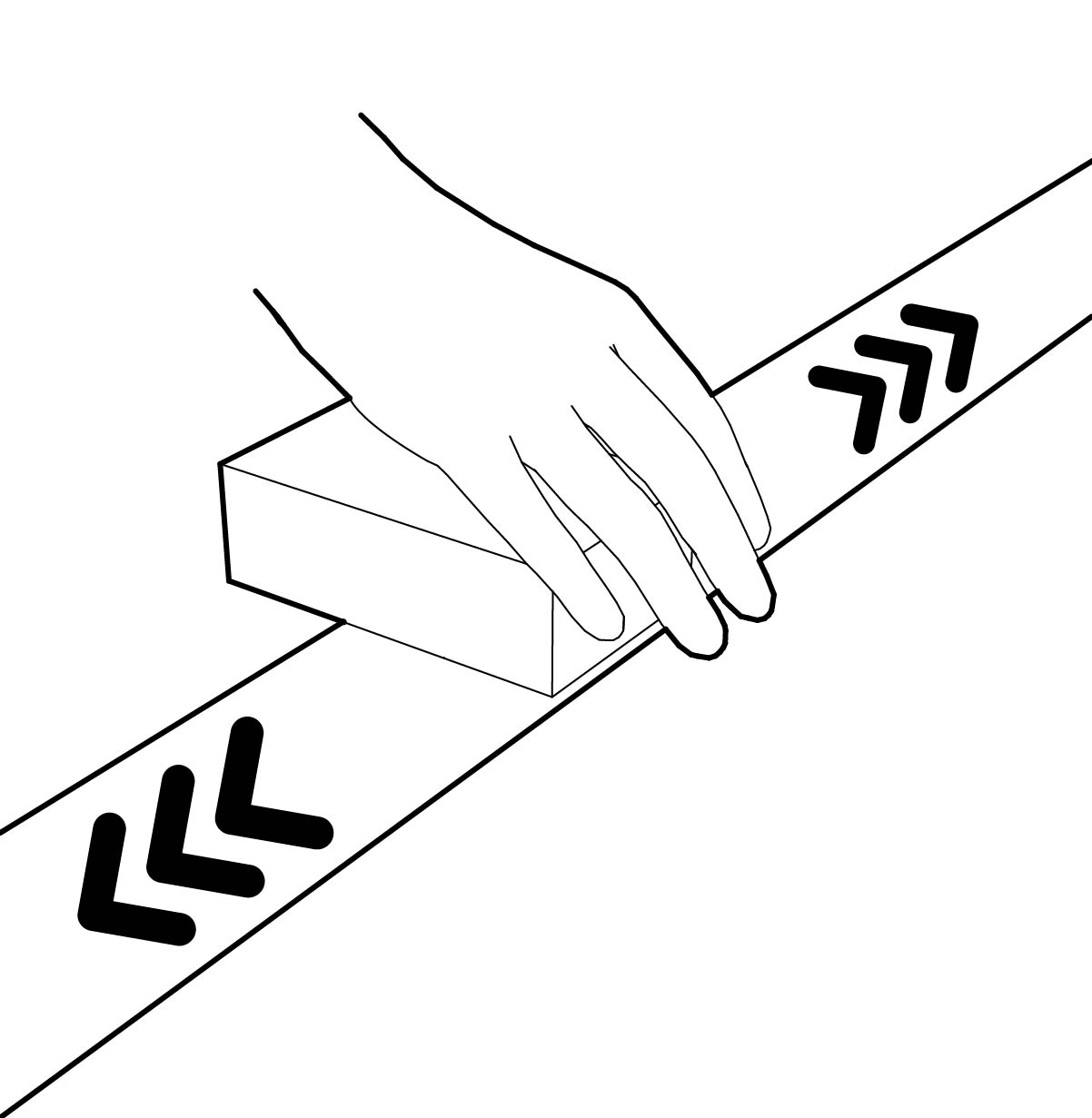
Using the Ink Dilution Method
CAUTION:Be sure to use hand, eye, and breathing protection when handling Acetone. While unlikely, should you feel dizzy for any reason, leave the room and seek fresh air immediately.
Ink Dilution Steps
STEP 1
Perform the cuts necessary for the PVC pipe segments. It is easier to work with smaller sizes and cut first than with large segments. You will want to work with each small section simultaneously, acting quickly before the acetone evaporates.

STEP 2
As mentioned before, work outdoors or in an open garage. Acetone emits vapors that are harmful and can cause dizziness or headaches. It may be best to use a respirator when working with Acetone, just as a precaution.

STEP 3
Before you begin, use gloves when handling acetone. You will want to use the heavy, yellow kitchen gloves, as the acetone will break down thin latex or nitrite (blue) gloves.

STEP 4
Apply an extremely small amount of acetone onto steel wool by tipping the acetone can into the steel wool pad.
Do not use large amounts as it will carry down the pipe and cause the ink to streak.
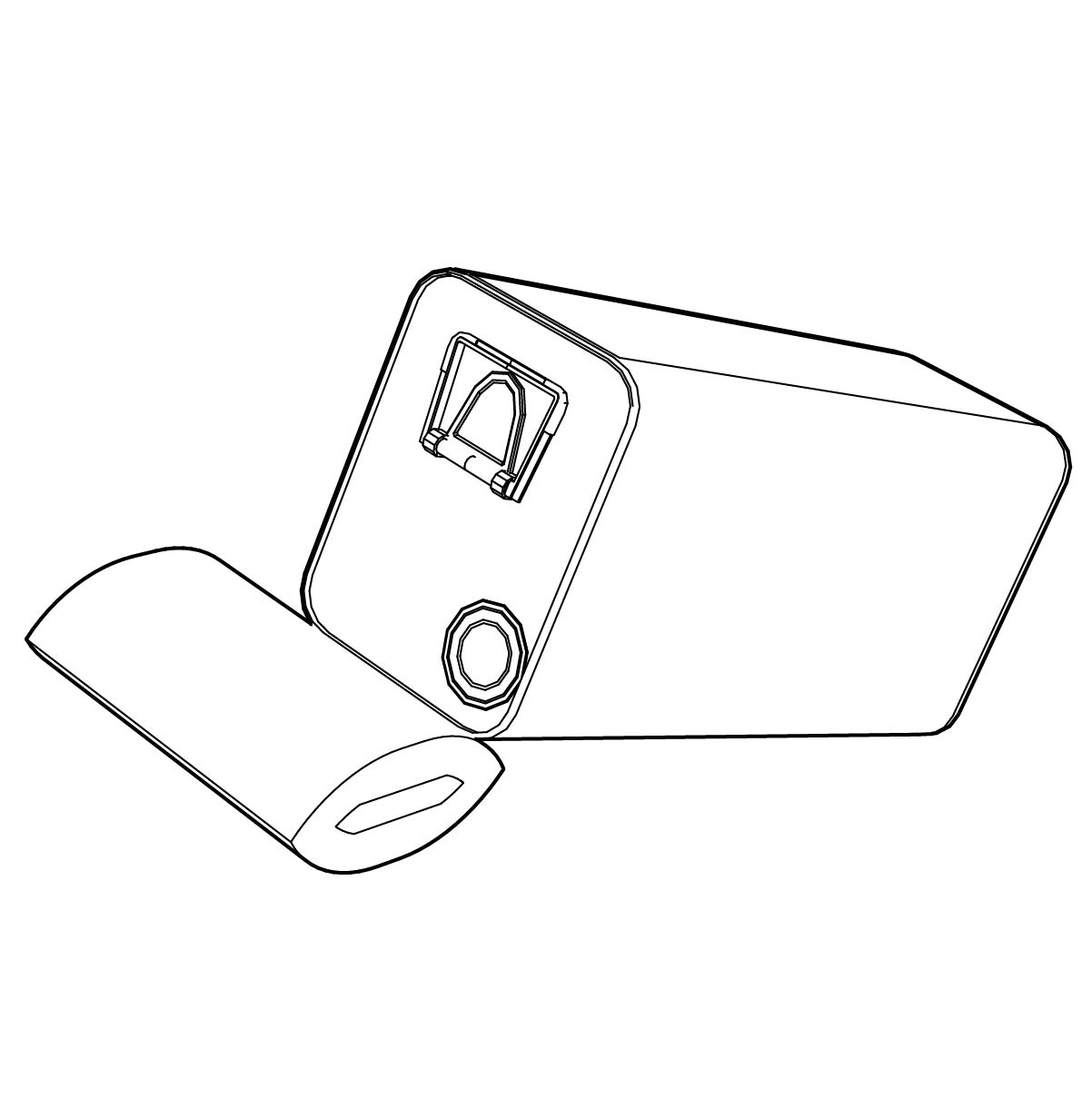
STEP 5
Rapidly work the surface of the PVC pipe in a circular motion. Concentrate on the areas of lettering and bar codes first, as the acetone will evaporate quickly.
Act very fast as the acetone begins to evaporate when it meets with air.
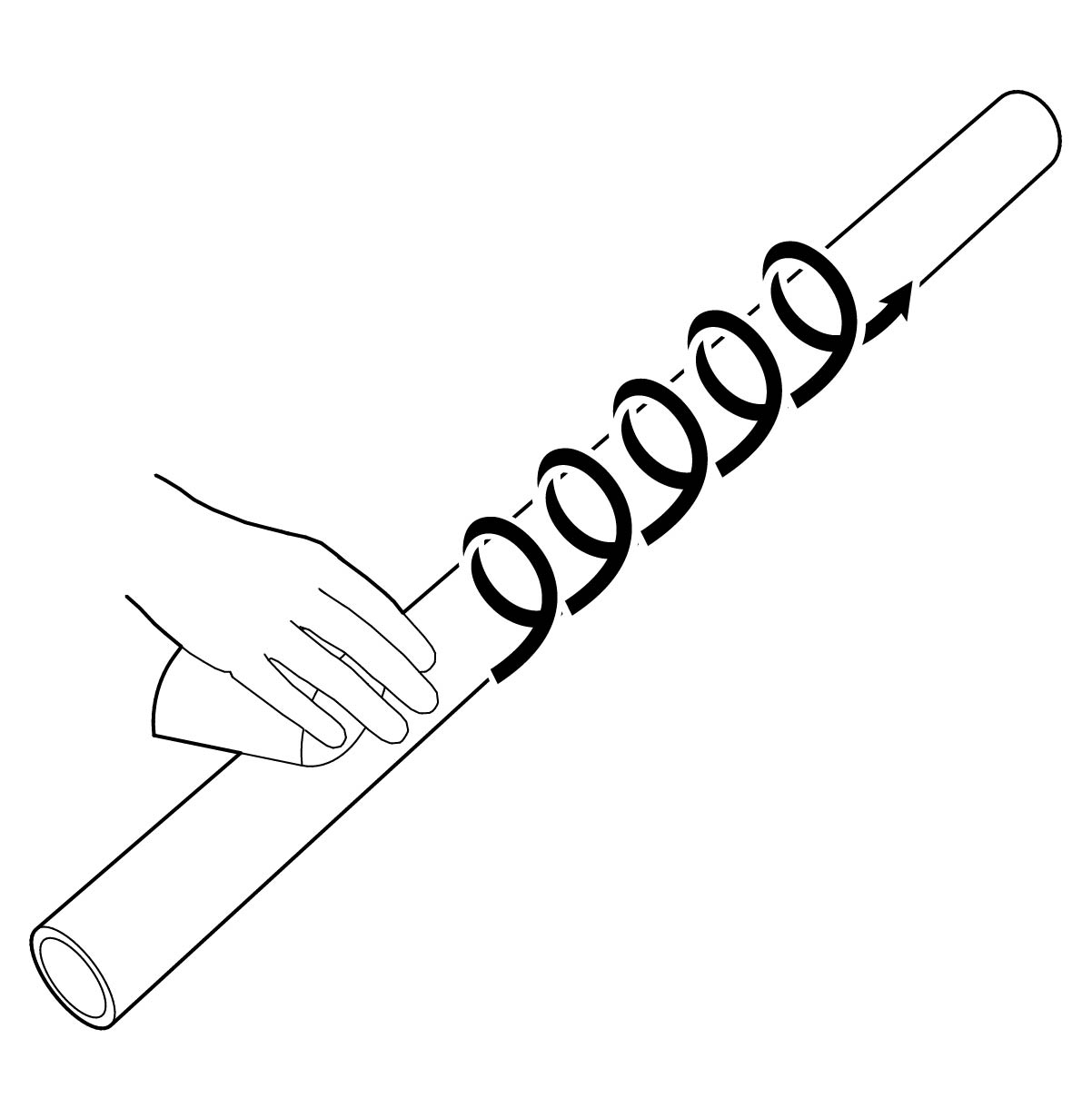
STEP 6
Working quickly, immediately wipe away the ink and smears with a clean cloth rag until they disappear.
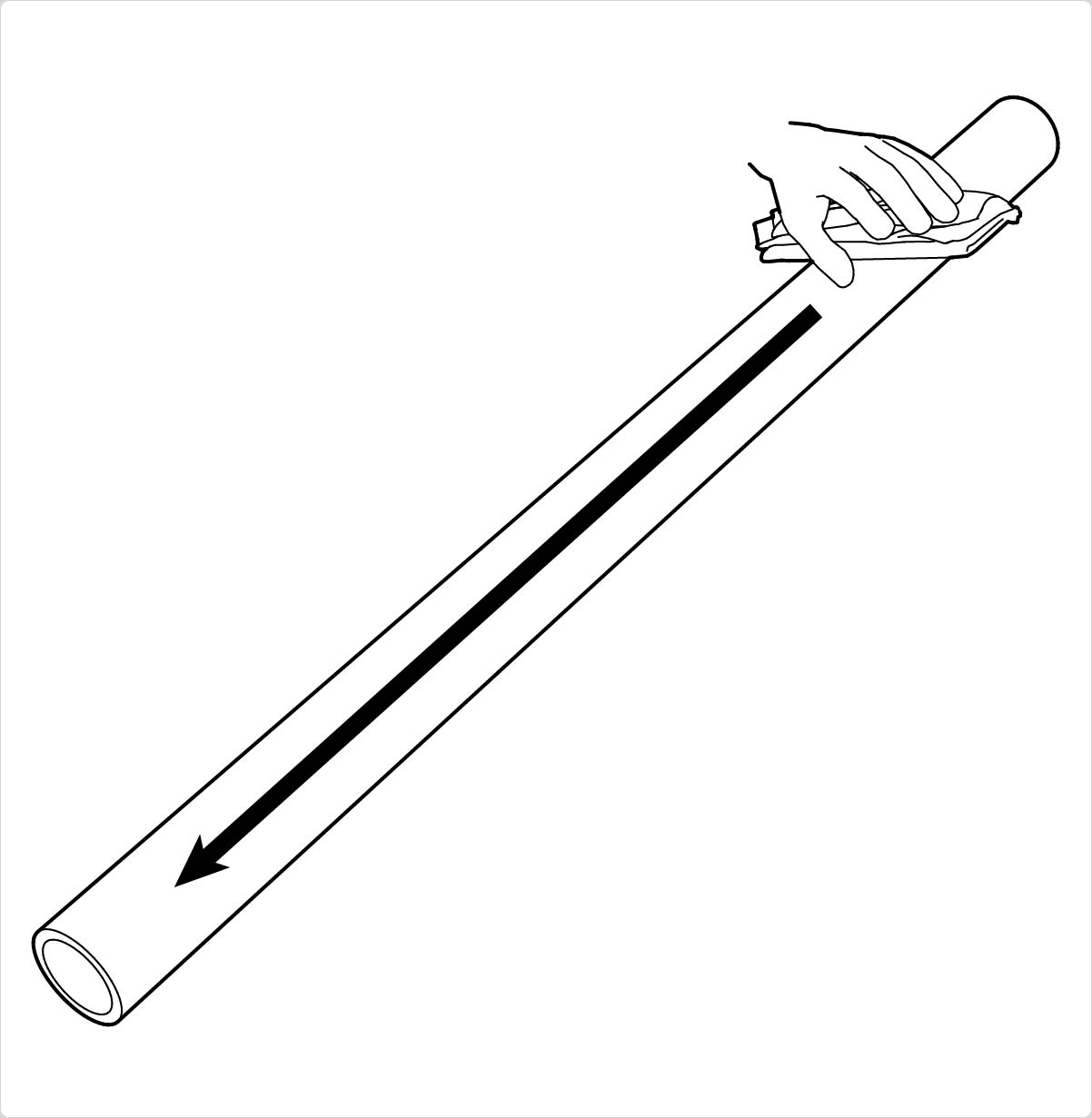
Wrap Up
Post-Cleanup
MAKING PVC PIPE GLOSSY
You can add the appearance of 'glossiness' to the PVC pipe after cleaning has been performed to give it shine and to make it similar to the high-glossiness of FORMUFIT PVC fittings that you may be using. This can be achieved using an off-the-shelf tire shine spray or liquid cleaner normally used on vehicle tires to make them appear new.
CAUTION: Do not use the tire shine cleaner on any PVC pipe that you plan to use as a foothold or a handhold. The tire shine cleaner contains silicone, making the PVC pipe extremely slick. This could cause someone using the pipe segment as a foot or hand-hold to slip and injure themselves.
- Apply the tire shine cleaner to a cloth or paper towel.
- Apply the tire shine to the PVC pipe, being sure to evenly distribute the tire shine across the whole pipe.
PVC Cleaning Avoidances
What not to do:
- Avoid using abrasives, such as sandpaper, to clean the surface of Furniture Grade PVC. This will scratch the surface of the PVC pipe and cause a swirling or line effect to appear on the pipe surface or may leave a dull finish. Only use this method on plumbing grade PVC pipe.
- Don't use regular household cleaners unless you are simply removing dirt. Regular household cleaners and other cleaners like bleach will not remove the ink or lettering on PVC pipe which has been printed with a special PVC solvent-based ink.
FORMUFIT Support
If you've read this guide and still have questions, feel free to contact us. We are constantly revising our documents and website with information provided by users just like you.
If you want to contact us with questions or suggestions, please email them to info@formufit.com
We've got a lot more guides where this one came from, which are available at formufit.com/pages/guides/.

